As Indians, we grew up on a generous dose of cricketing action. However, both of us share a love for all kinds of sports and so when we landed in England, the football fever caught us on. Living in Liverpool allowed us to experience some of the memorable football moments firsthand. We also visited some of the stadiums such as Anfield and Old Trafford. This time we are back in Manchester for the Manchester City Stadium Tour Experience.
Manchester City FC is one of the ‘Big Six’ clubs in England. They are the reigning Premier League champions and their home ground is Etihad in East Manchester. Read on to know more about our experience and about the club itself.
Scenes from Outside the Stadium
MCFC stadium tour lasts around 90 min. It is a guided tour where a staff member takes the visitors around the stadium and explains everything. We had pre-booked our stadium tour tickets and arrived at the city campus on the designated day. We had, as usual, arrived well ahead and so walked around the stadium a bit.
The walls of the stadium showed highlights from the club’s history. We’ll get a quick snapshot of the club right from the start to the present by looking at these pics. The major highlights included founding the club, changing to the present name, shifting to Maine Road stadium, King George attending a match, first FA cup victory, and more. Another notable achievement includes the club winning of all four domestic cups in a season (2018-19).
There are two statues too – a comparatively newer addition to the stadium premises, we think. The Vincent Kompany and David Silva statues stand tall as a tribute to their wonderful contribution to the club’s recent success.
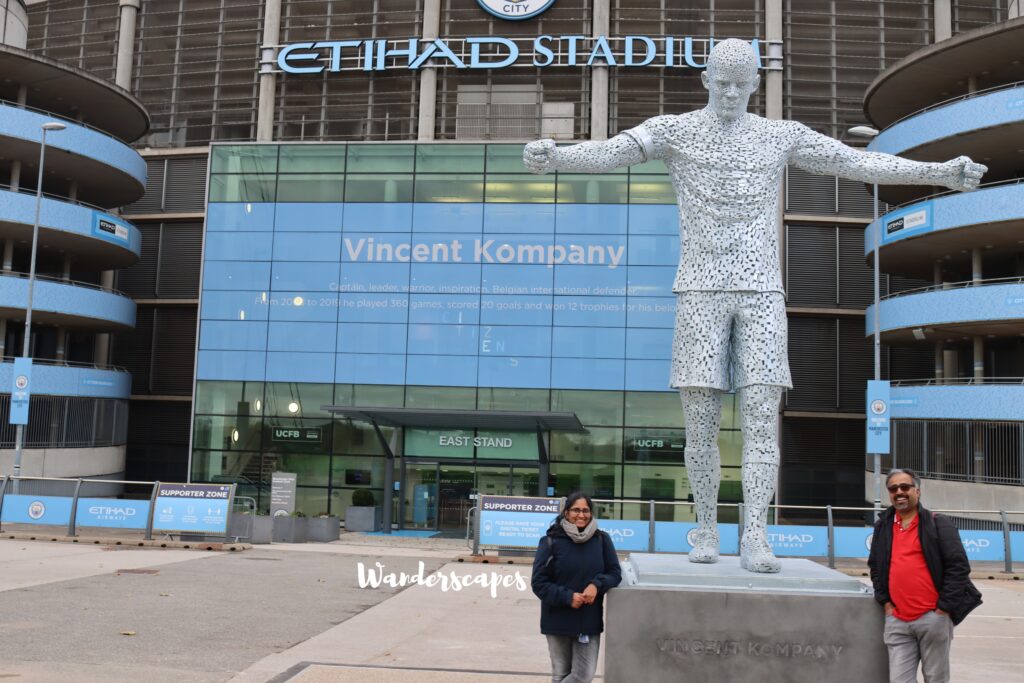
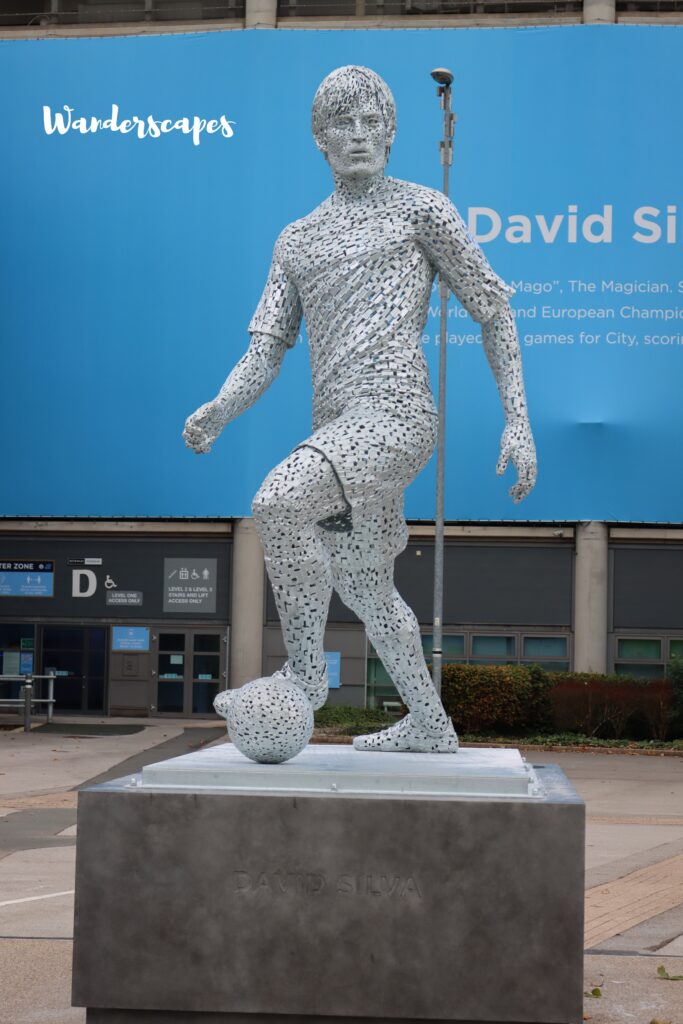
Manchester City Stadium Tour Starts
We reported at the City Store on time for the tour. The staff greeted us warmly and handed us an audio guide (to give us additional information during the tour). We entered a small room with several displays. There were some memorabilia from the past as well as some of the trophies the club won in the recent past. There was a model of the stadium itself along with a show on the evolution of the Man City crest.
Soon our tour guide introduced himself and led us to a room to show us the history of the club in a 7-minute movie. It gave us a quick recap of the club’s journey from 1880 to the present.
To the Stadium
After the short movie, the guide led us to the stadium. On the way, he showed us the area (City Square) where fans and performers chill out on match days. He also told us that the big lettered names displayed on the walkways were of the supporting clubs from around the world and the small lettered names were the season ticket holders. The guide joked how he couldn’t find his name in that even though he had been searching it for years now. He also told how surprised he was when some visitors found their names on the first try during a tour.
Soon, he ushered us into an area where the home team arrives on match day. The players get a warm welcome here. (In the pre-covid times, fans could even shake hands with their favourite players as they walked in) Once inside, the players get a light meal and can prepare for the match ahead. The players arrive 90 min before kick-off on match day.
Away Dressing Room and Facilities
The guide then took us down a flight of stairs to the away team’s dressing room and facilities. The away team doesn’t get the same ‘star’ treatment as the home team. They enter and leave through a different exit and get moderate facilities while here. The away dressing room was pretty drab and boring. Painted in grey, it had bare minimum facilities. A seat and a shelf to hang the shirts – that’s all.
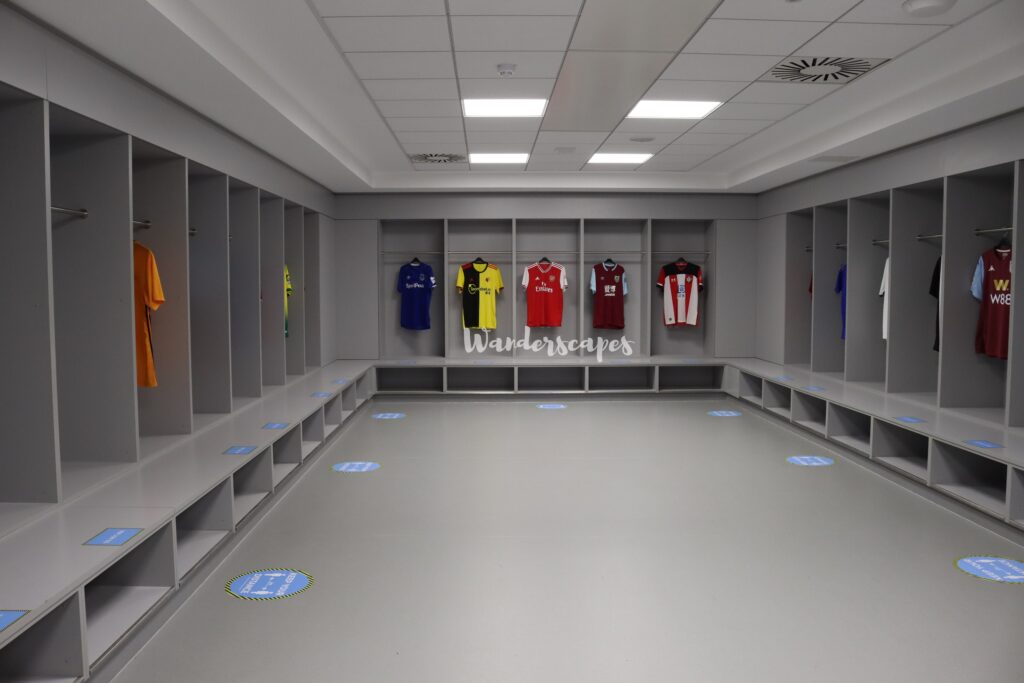
However, the guide pointed out that the away dressing room is pretty big by the usual standards and that UEFA gave it a 5-star rating. Later, we passed through the medical/physical room for the away team. There were 5-6 beds and a few exercise machines in there.
Interestingly, the away teams carry all their supplies while travelling. The home team only offers sealed water bottles, that too, if specifically requested. Usually the away team is offered no food or drink at the stadium.
Home Team Facilities
The home team, on the other hand, is pampered on a match day. They do some light exercises and stretching at the well-equipped gym at the stadium to warm up before the match. The home team dressing room is circular and very spacious. Even the seats looked comfortable and the entire setting oozed a luxurious feel.
The home team jersey was on display. Our guide told us that Pep decides who sits where and the shirts are hung accordingly. Also, the circular design with no cubicles or shelves meant there is no place to hide. Everyone can see each other in there and there is no running away from anything. There was a whiteboard for strategy planning and a big screen too.
They showed us a small reel on Pep and how he motivates the players to do their best.
The Ground and Pitch at Manchester City
From the dressing room, we headed to the player’s tunnel and out onto the ground. The stadium is huge. It has a capacity of about 55,000 people. The guide shared several details with us and showed us around. He told us where Her Majesty the Queen sat when she inaugurated the commonwealth games in 2002. He also told us where the VIPs sat, commentators sit, and more.
We also sat in the player’s dugout – both home and away. It was a fantastic feeling to sit where some of the great players of the present sits on a match day. We recalled the excitement we felt sitting at the home dugout at both Anfield and Old Trafford.
A Pic with Pep
We then went to the press conference room. We also saw the VIP lounge area and player interview areas on our way. In the press conference room, none other than Pep gave us a briefing (albeit virtual) himself. We also clicked pics with him 😀
Soon, it was time to move on and the guide took us back to the city store where he showed us yet another reel. This was about the City academy and the activities they spearhead. And with that, the tour ended. We thanked our guides and headed out of the store.
Our Impression of the Manchester City Stadium Tour
The tour was as we expected. There were no ugly surprises. The home dressing room, pitch and ground, and of course, the pic with Pep were the highlights for us. We felt it was rushed because we had to do a lot of things in a short time. We had to listen to the guide, understand it all, record everything for our vlog, click pics, and so on…
Overall, the tour was good. We would recommend it to football fans. If you are a Man City fan, you are more likely to enjoy it more than anyone. But, even if you are not a Man City fan, being there and seeing it all for yourself is an exhilarating experience. And if you are brave enough to wear the colours of an opponent, you can enjoy some light banter too…
A Brief History of Manchester City Football Club
It is the history and story of the places we visit that make them unique. So let’s look at the club’s history.
Manchester City FC was founded in 1880 as St. Mark’s. They later named it Ardwick Association Football Club in 1887 before naming it Manchester City in 1894. One of the oldest football clubs in the country to enter the Football league in 1892, Manchester City won its first major honour in1904 with the FA cup.
After playing at various grounds over the years, Manchester City moved to a stadium named Hyde Road in 1887. They continued to play there until the club moved to Maine Road in 1923. Maine Road was the club’s home ground for the next 80 years until 2003. It was then that MCFC moved to Etihad stadium in East Manchester.
The club leased the erstwhile City of Manchester stadium, built for the 2002 Commonwealth Games, and renamed it Etihad (in 2011) as a part of a sponsorship deal. Although the Manchester City council still owns the stadium, the club has leased it for 250 years. The lease amount is 4.5 million pounds, which the council invests back into the area to develop other sports facilities and a SportsCity.
Other Highlights of Manchester City FC
MCFC adopted the sky blue home shirts in 1894 during its first season. The club is using the same colours since then.
The journey of the club was a rollercoaster ride. MCFC tasted its first major success during the 1965-75 period. It was during this time it won the League, European Cup Winners Cup, FA Cup, and League Cup. Illustrious managers such as Joe Mercer and Malcolm Allison led them to a world of glory.
However, the club couldn’t sustain the winning streak as a loss in the 1981 FA Cup final led the club plummeting to new lows. That saw the club relegated to the second division and eventually to the third division in 1998 – something unheard of in English football – a European cup winner playing in the third division.
But, the club soon worked its way up and entered the top tier again in the 2001-02 season. Since then, the MCFC is a regular part of the Premier League.
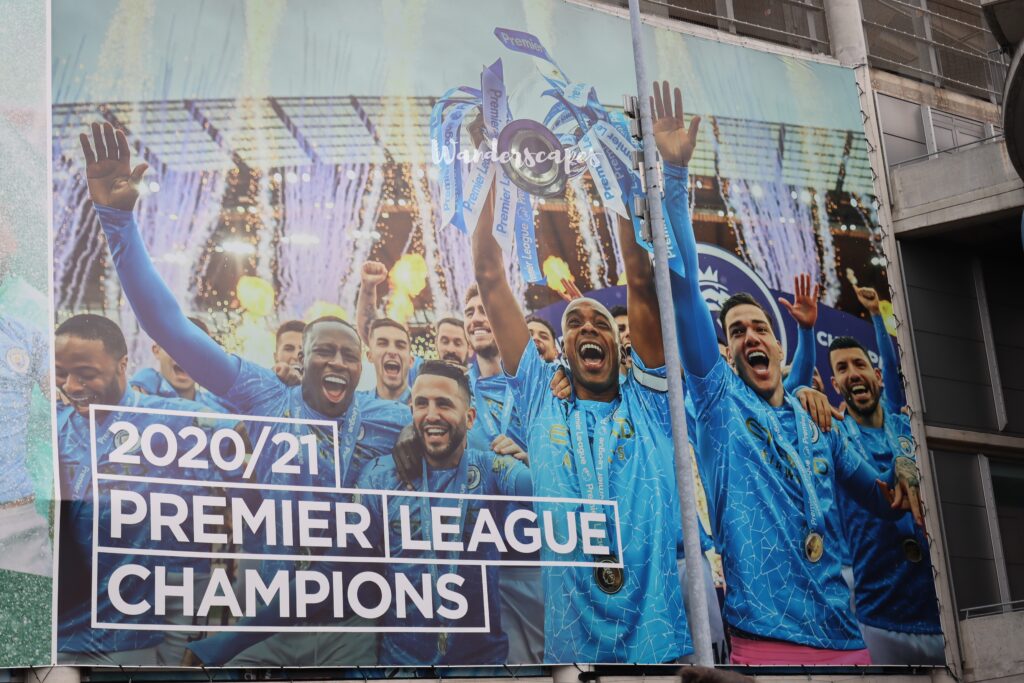
New Owners and New Life
In 2008, Sheikh Mansour bin Zayed Al Nahyan of the Abu Dhabi Royal Family purchased Manchester City through the Abu Dhabi United Group. The club received considerable financial investment which boosted its fortunes both on the ground and in the club facilities. The Etihad Campus is living proof of the same. Eventually, all of it started paying off with MCFC winning the FA Cup in 2011 and the League in 2012. It was the first time the club exhibited a convincing performance since the 1960s.
The Pep Guardiola Era
Manchester City FC, under Pep, became the first-ever and only team to attain 100 points in a single season in the year 2018. Pep Guardiola also led the club to another record-breaking performance when in the 2018-19 season MCFC became the first-ever team to win all the four domestic trophies in England. They continue to do well in Premier League and are the reigning Premier League Champions (2020-21).
Some Controversies
In 2020, UEFA banned MCFC from European competitions for two seasons on grounds of breaches of the UEFA Financial Fair Play Regulations. However, they overturned the decision in a few months when the club appealed to the Court of Arbitration for Sport. The club also received a reprieve when the authorities reduced the fine of €30 imposed earlier to €10 million.
In April 2021, City announced joining the proposed European Super League as one of its twelve founder members along with the five other of the “Big Six” English football clubs. However, a huge outcry from fans and the domestic football association forced the club to overturn the decision.
Few Trivia
- Manchester City retired squad number 23 since 2003 in memory of Marc-Vivien Foé. Foé was on loan to the club from Lyon when he died on the field while playing for Cameroon in the 2003 FIFA Confederations Cup.
- Based on trophy count (28), Manchester City is one of the most successful teams in England
- MCFC paid record transfer fee of £100 million to Aston Villa for Jack Grealish in August 2021
- Manchester City fans call themselves the Citizens
- The greatest rivalry is between Manchester City and Manchester United. However, of late, most fans consider Liverpool FC as their greatest rivals.
- Man City holds the record for the fewest goals scored at home in a Premier League season – they scored just 10 goals at home during the 2006-07 season.
- City also holds the record for being the only club to be relegated with a positive goal difference. In 1937-38 they scored 88 goals while conceding just 77.
An Indian Connection
The City Football Group is a majority stakeholder of Mumbai City FC since November 2019, as they bought 65% stake of the club. Mumbai City FC is a professional football club based in Mumbai, India, and competes in the Indian Super League.
Click here to watch our vlog on our visit to Etihad.
Find our other travel blogs here.
How to Get There:
Walking: Etihad is just about half an hour walk away from Manchester Piccadilly station. You can reach the stadium by following the City Link signs. The walking route is safe, well lit and signposted. You can also cycle to the stadium. There are several bike racks around the stadium.
Bus: If travelling by bus you can get down at the bus stops adjacent to the stadium. The buses to Manchester city centre line up on the Ashton New Road next to the South Stand after matches. Do check for more information here or via Twitter handle of Transport for Greater Manchester.
Metrolink: Etihad Campus has a dedicated tram stop adjacent to the stadium, at City Square.
Car park: If you are travelling by car, you can pay and park onsite in the Blue Car Park’s G & H. Please note that its is accessible from Alan Turing Way (Gate 2). The post code is M11 4DW. Disabled car park is also here. But there are limited spots, which is often allocated to seasonal supporters.

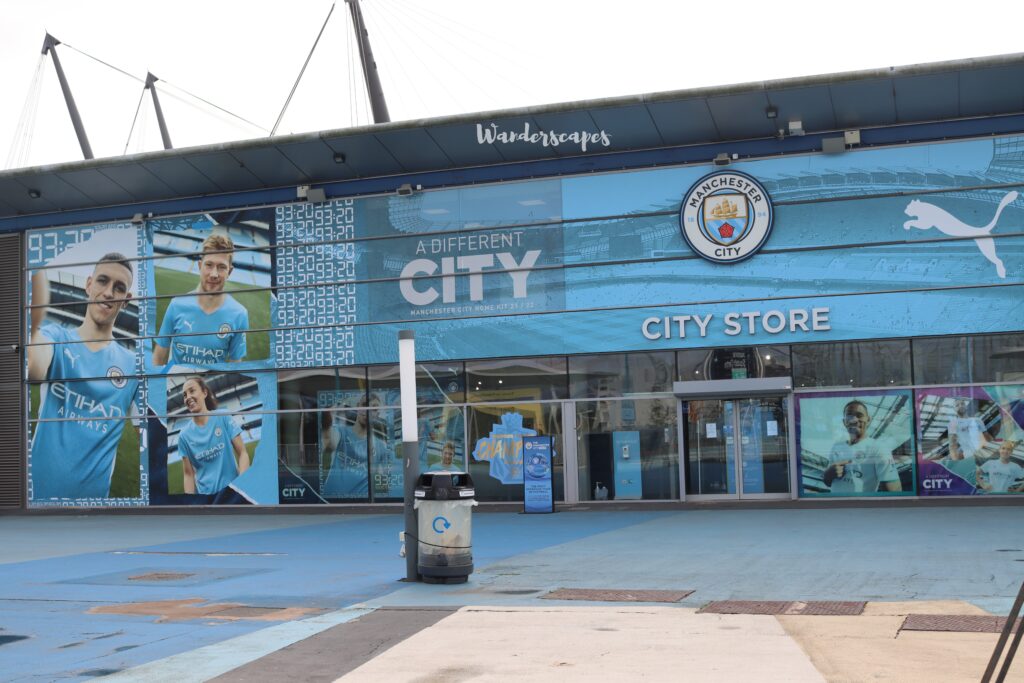
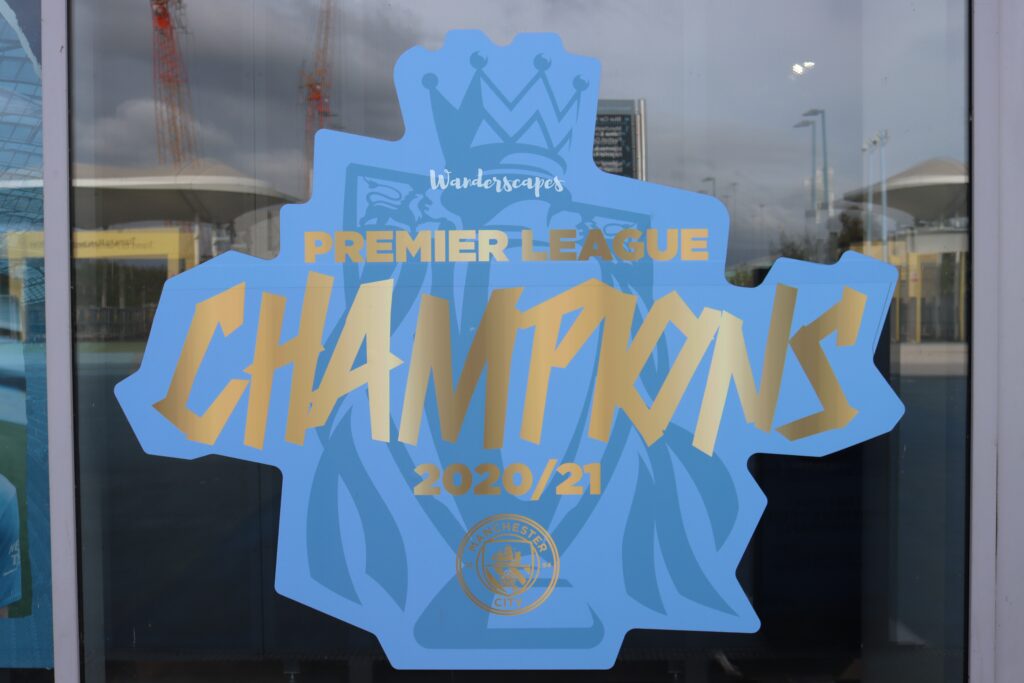
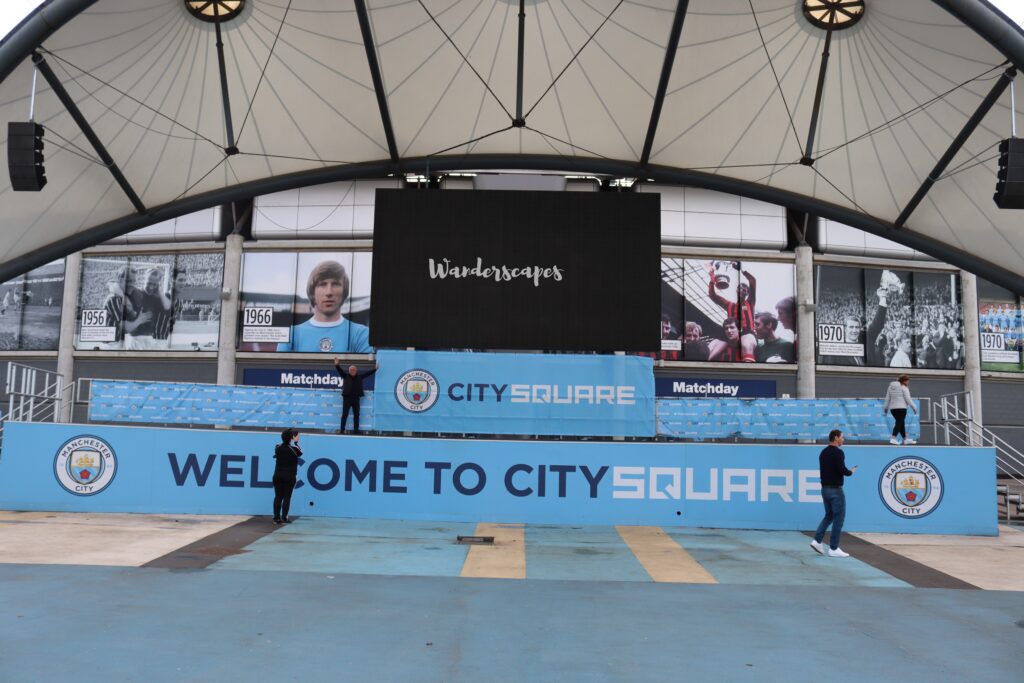
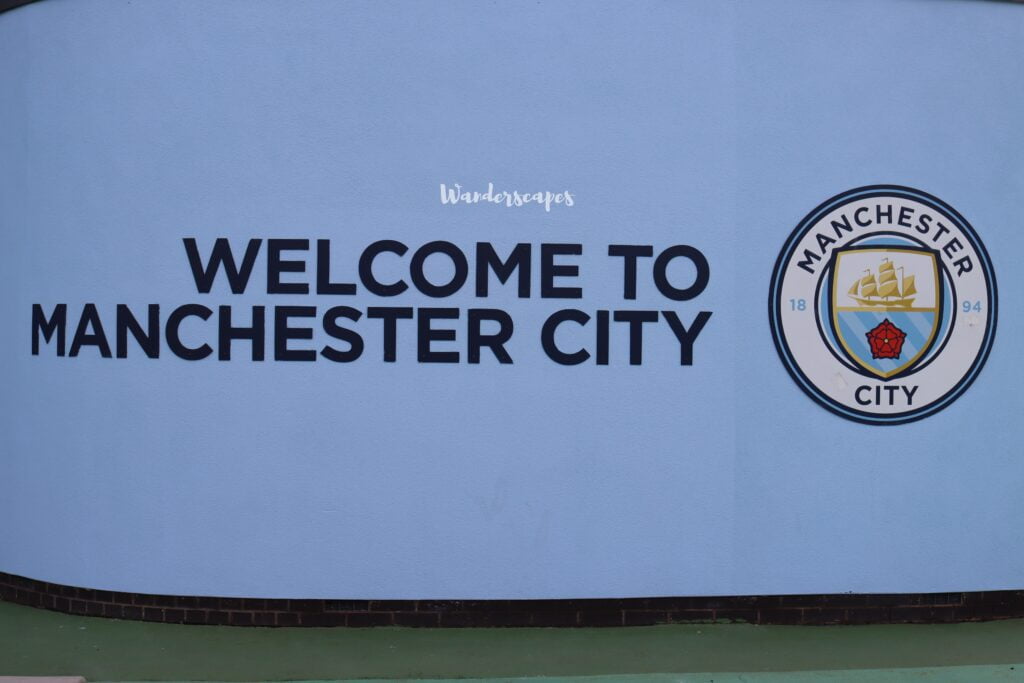
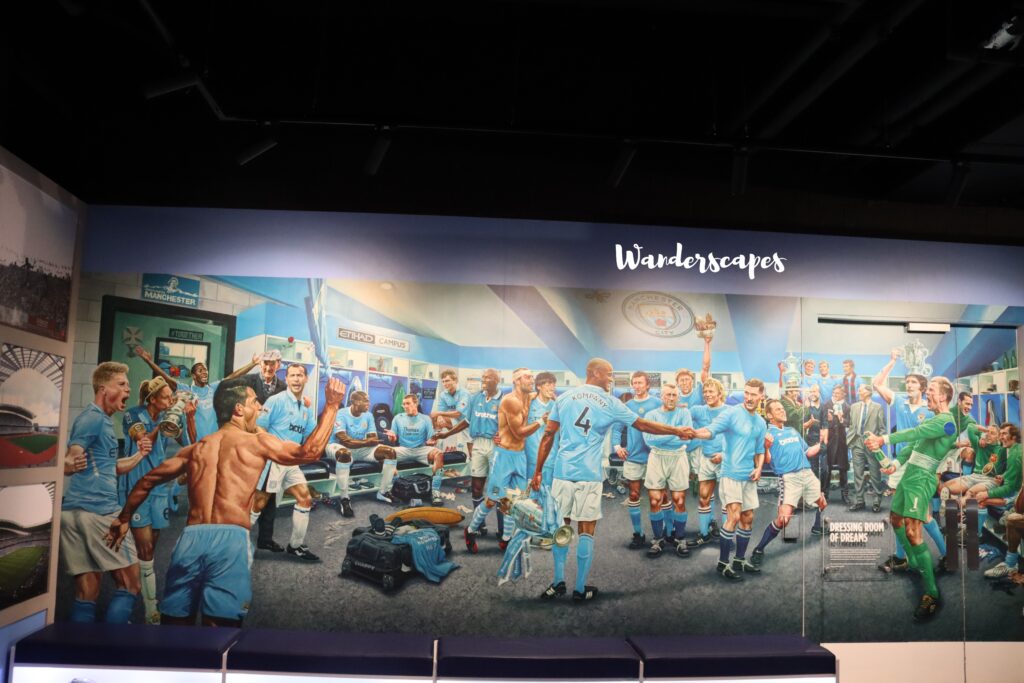
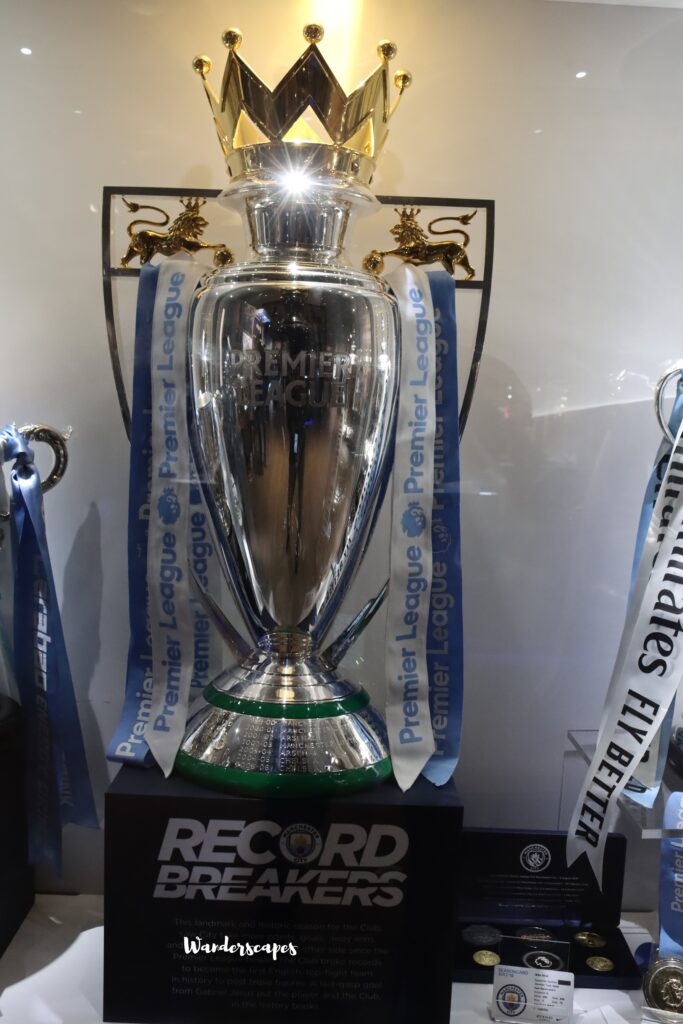
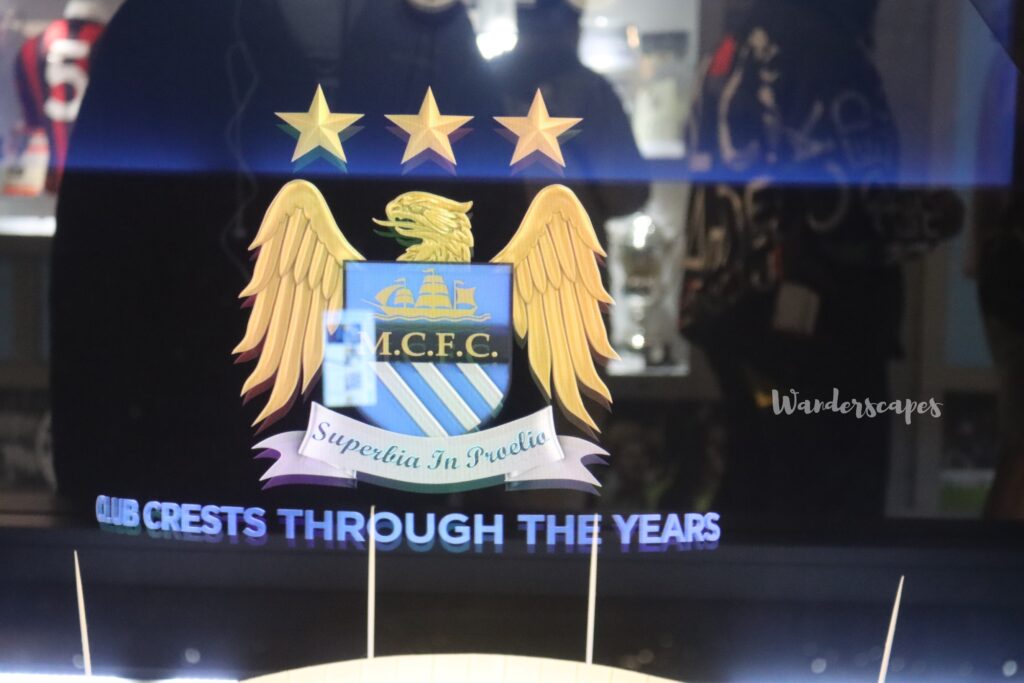
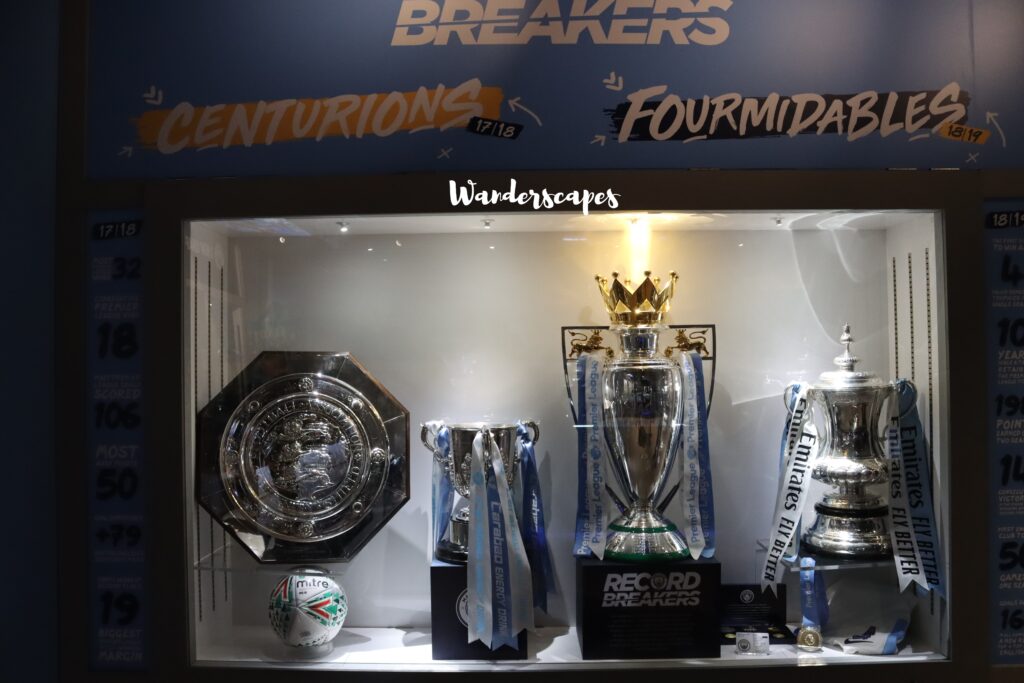
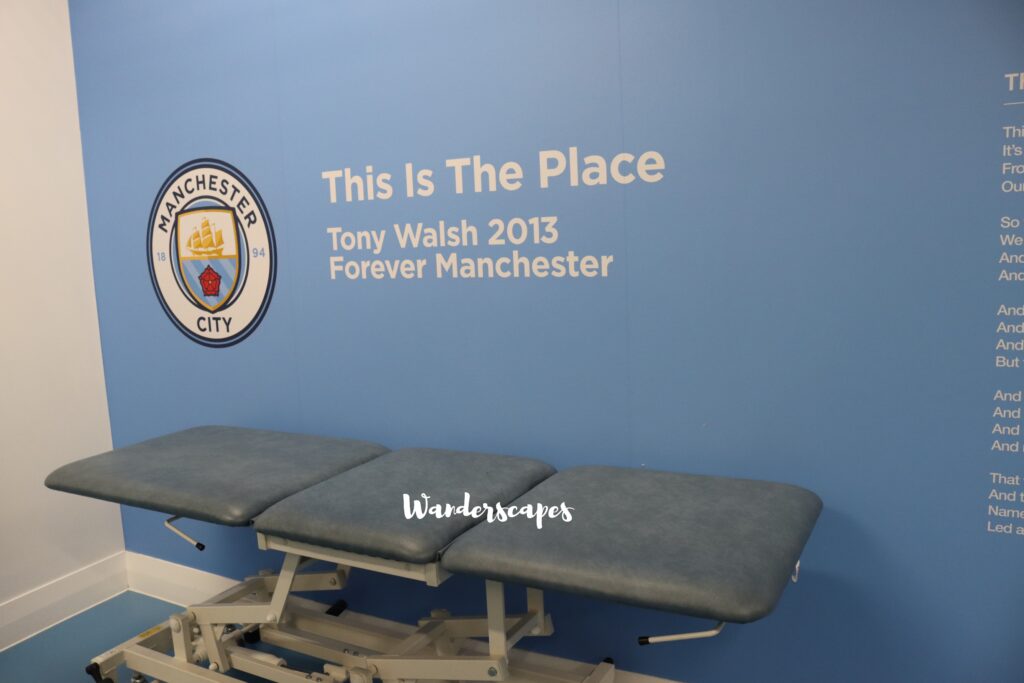
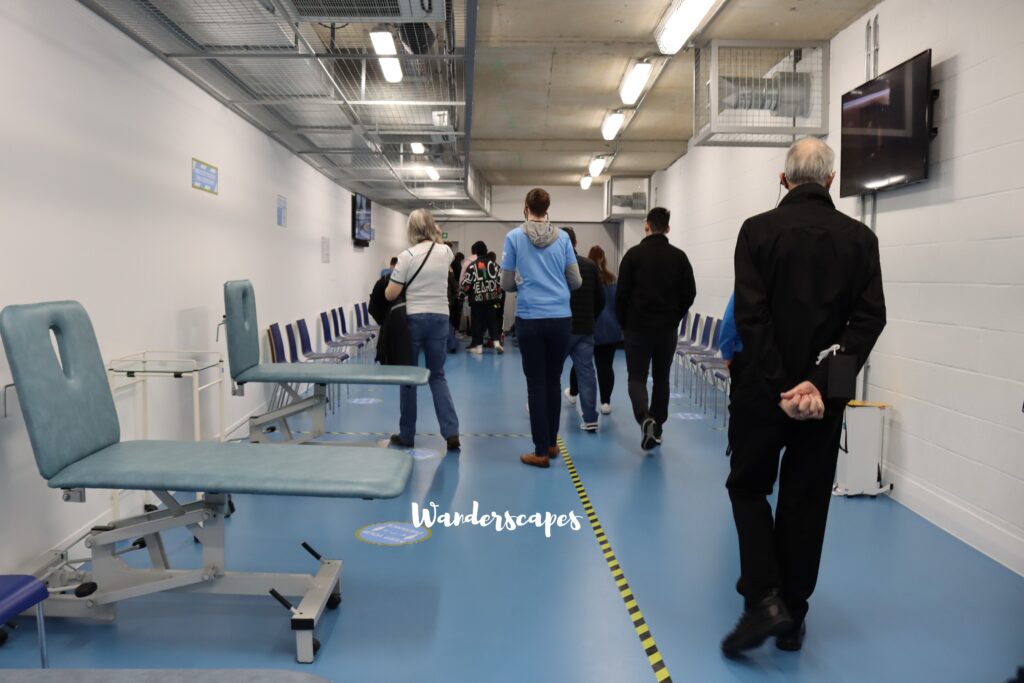
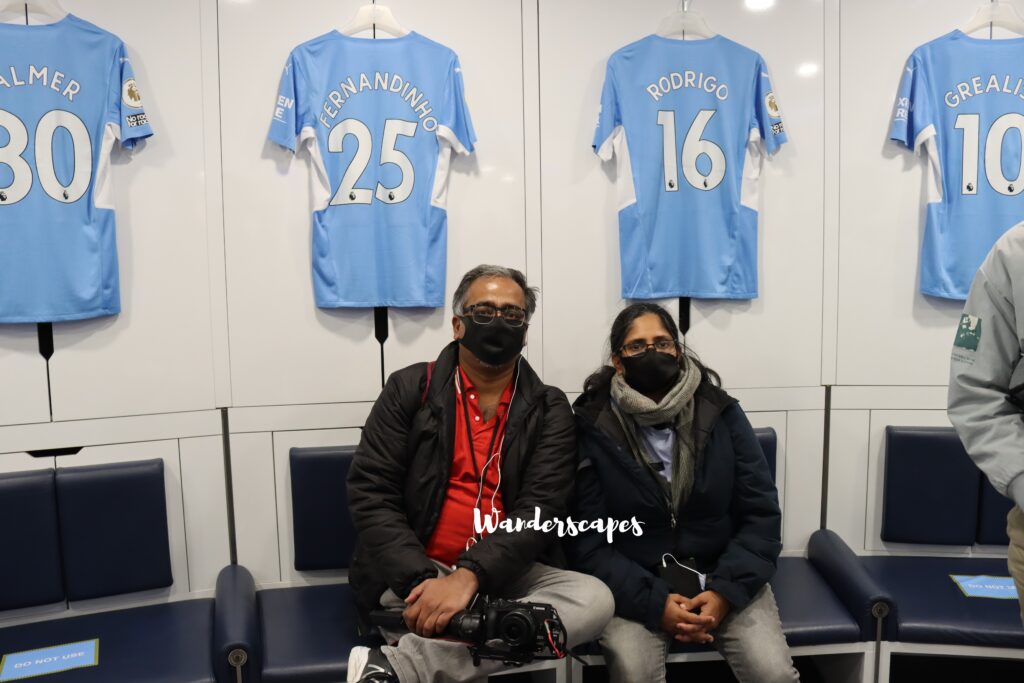
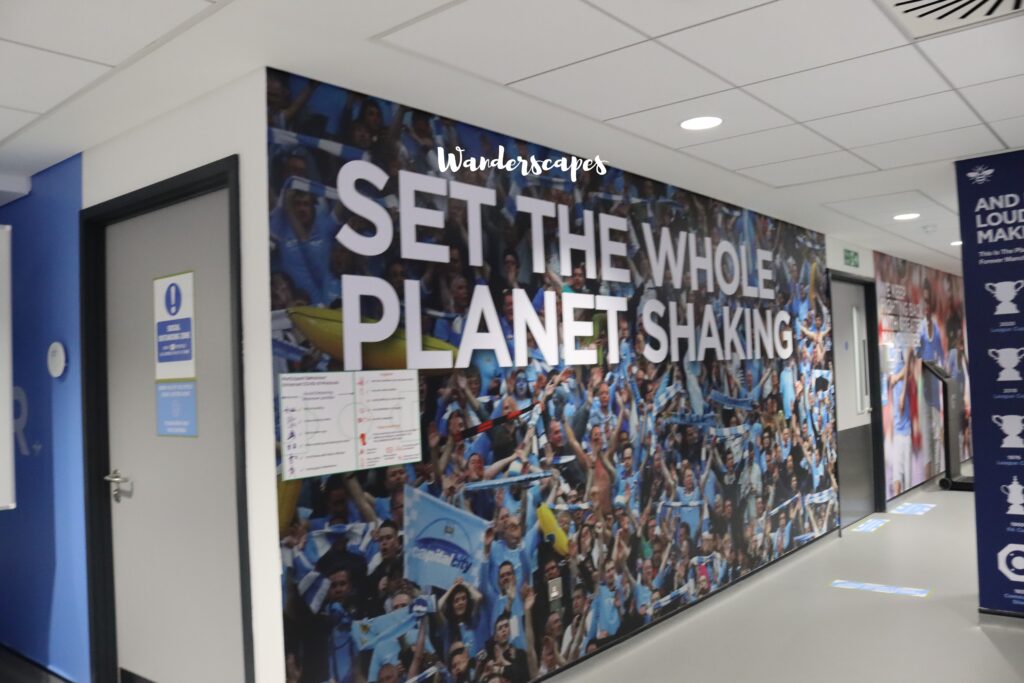
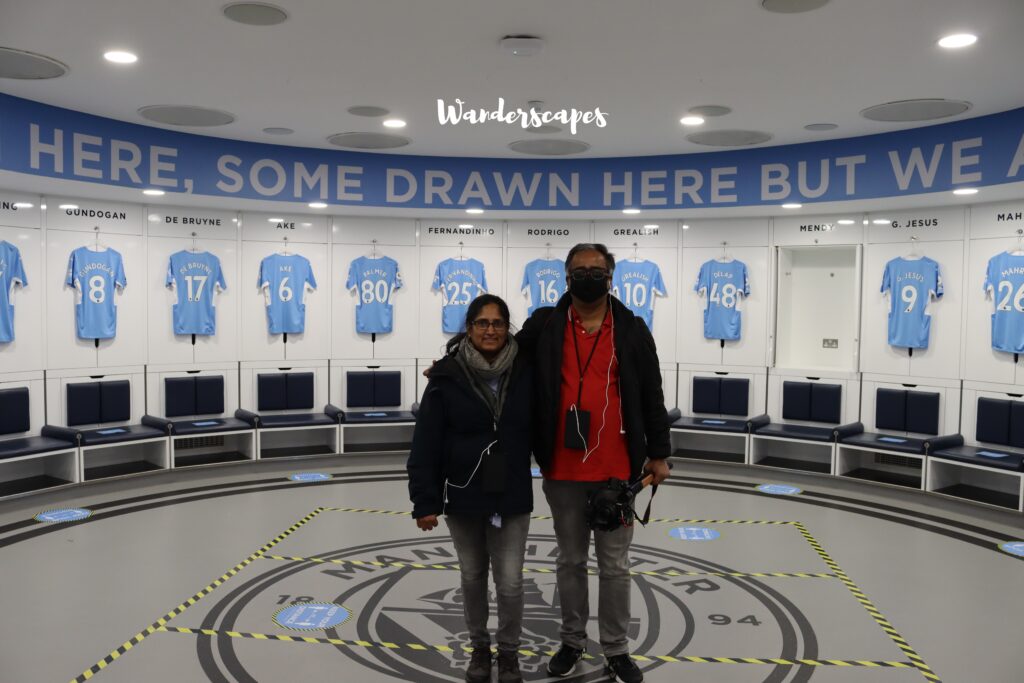
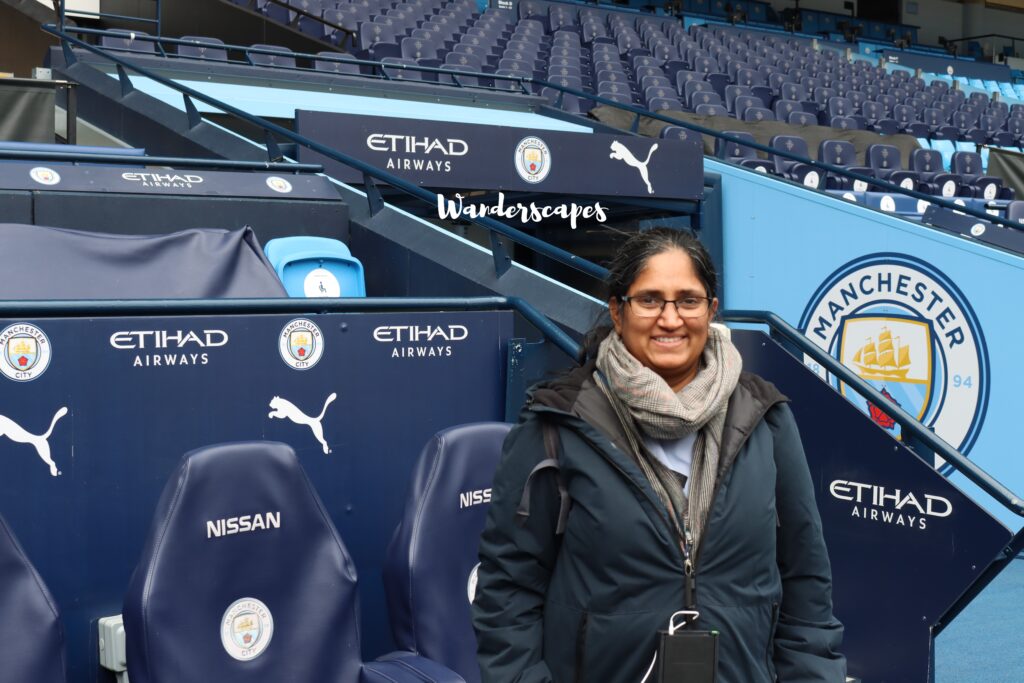
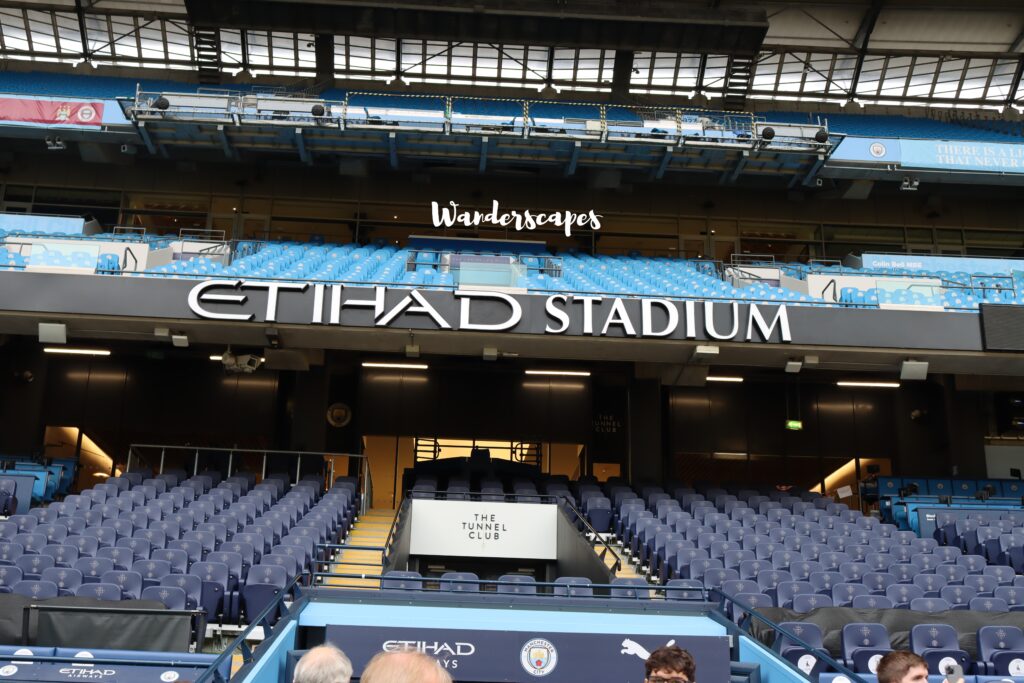
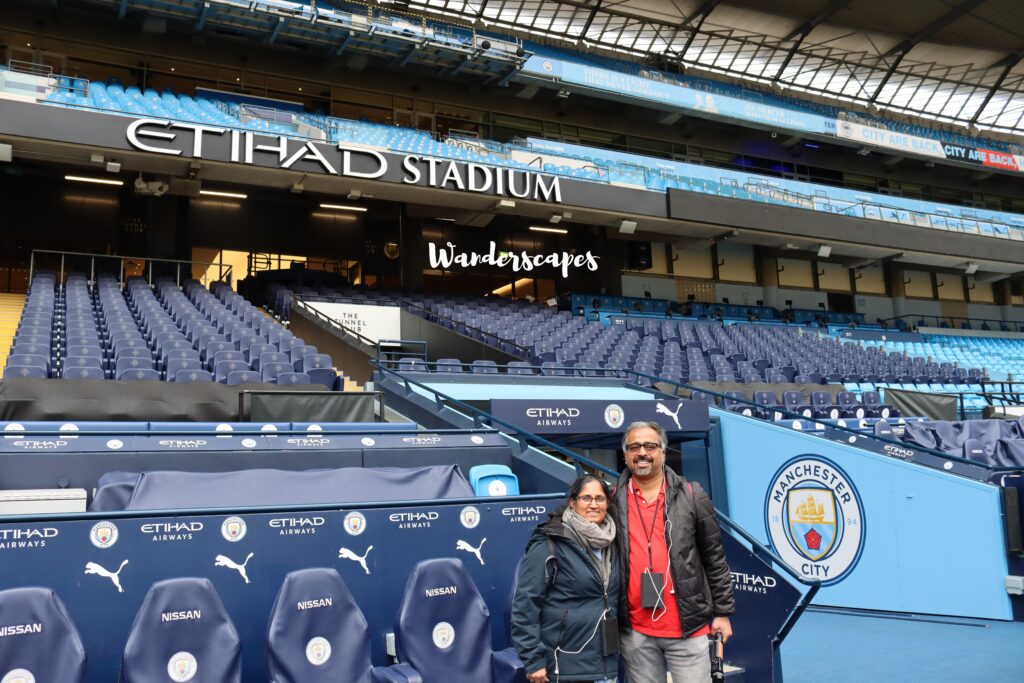
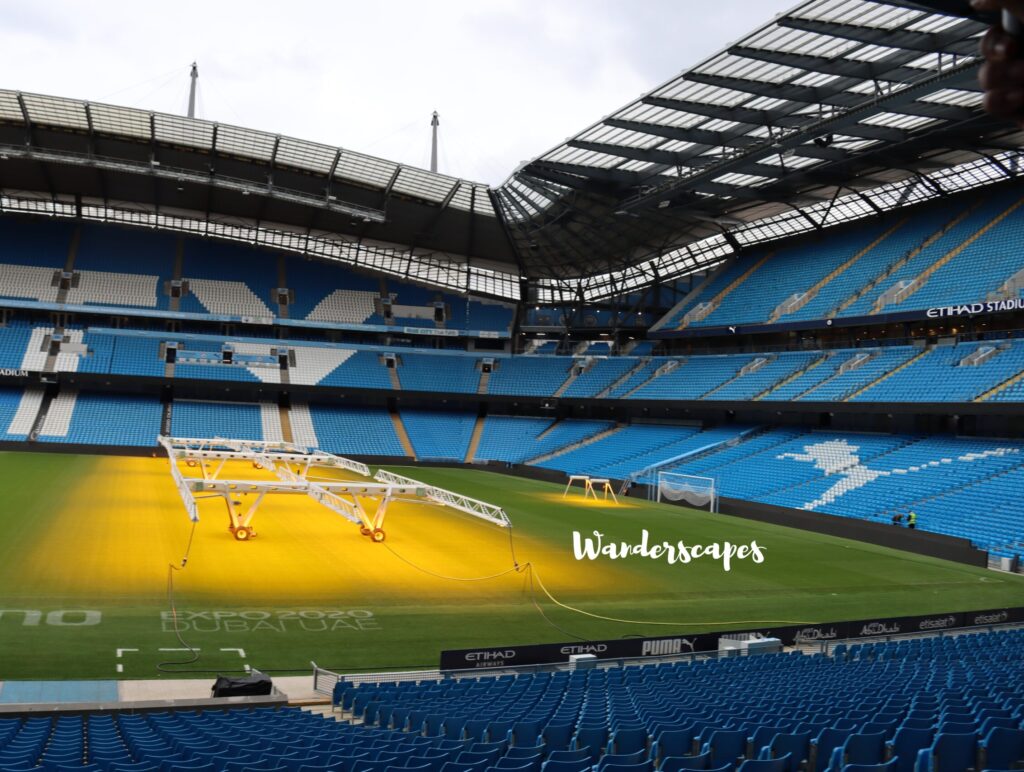
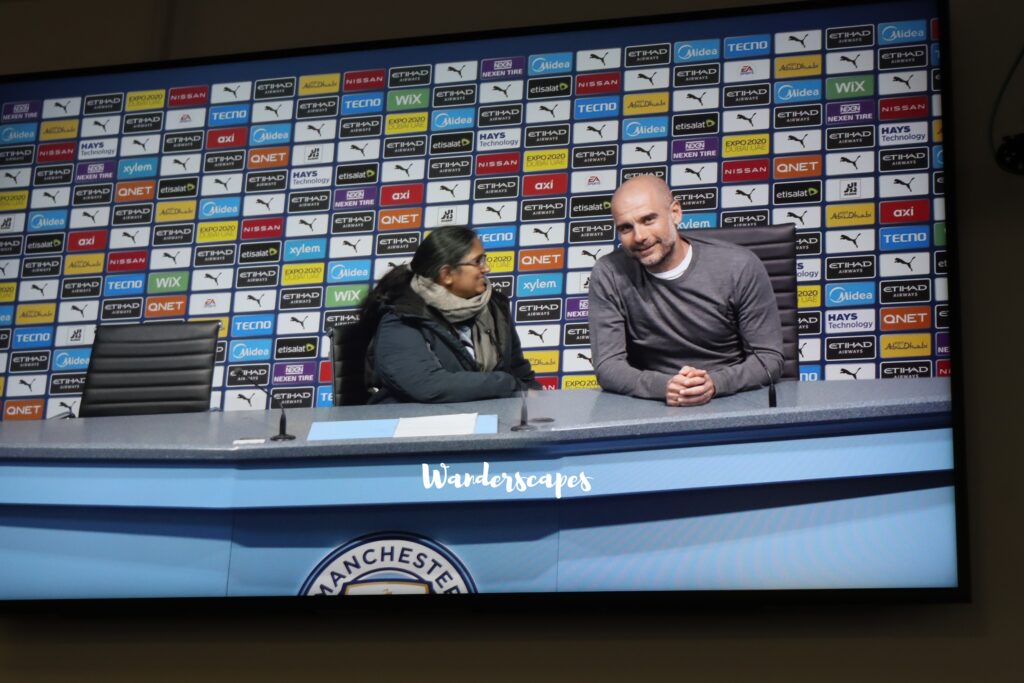
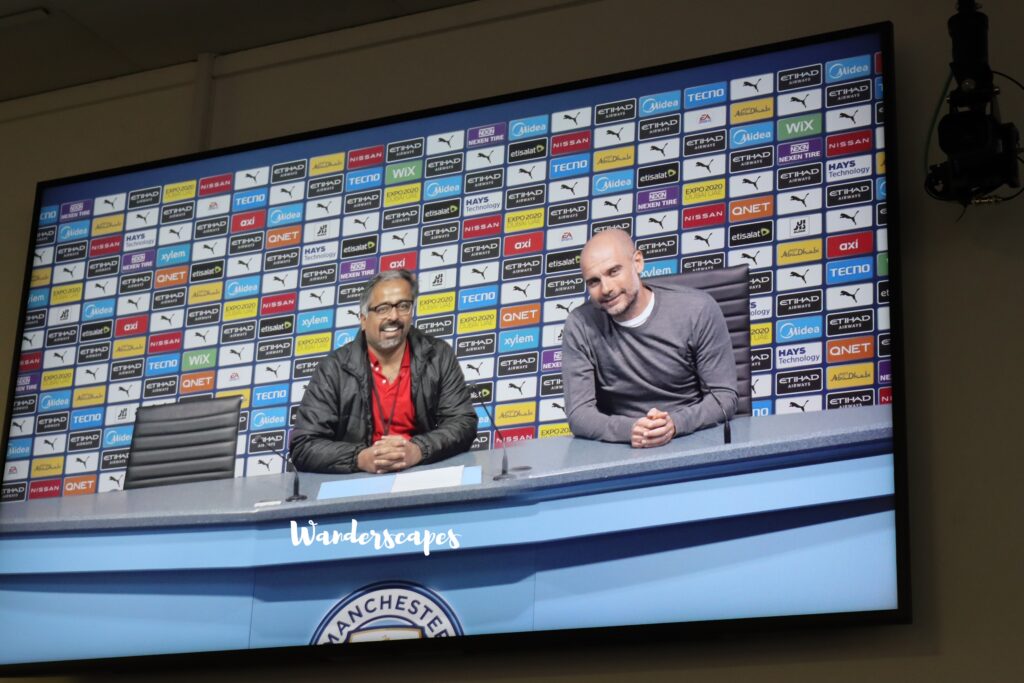
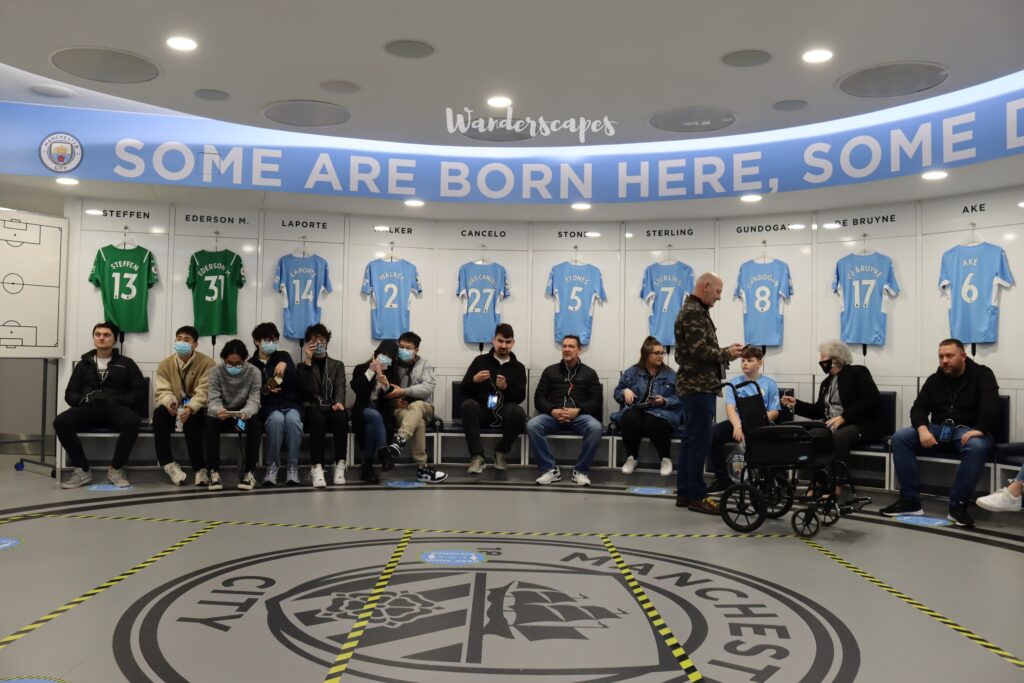
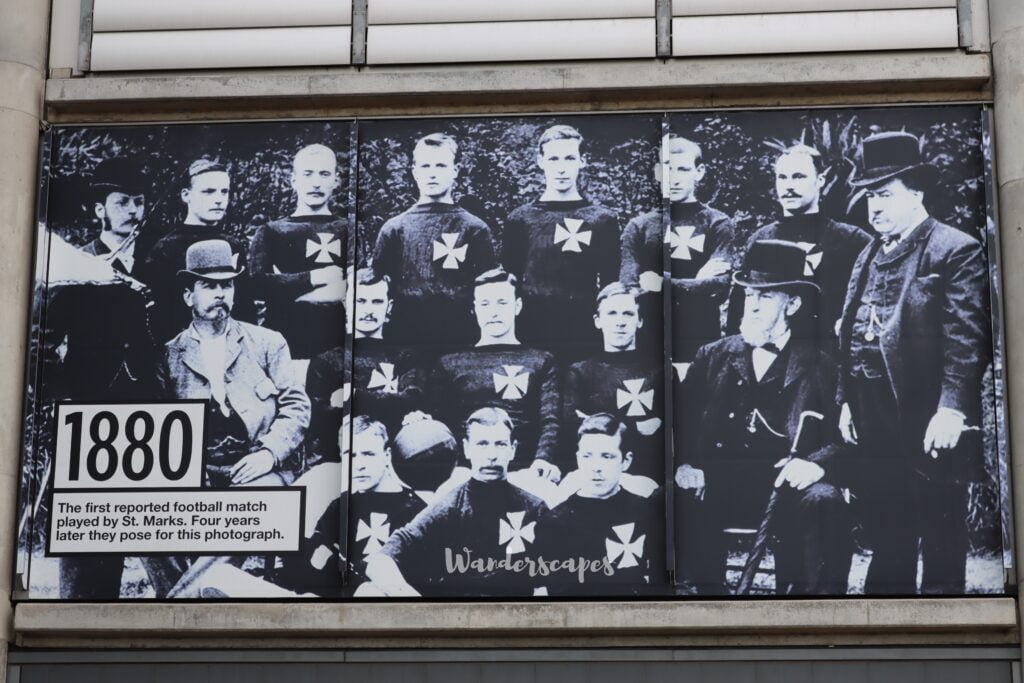
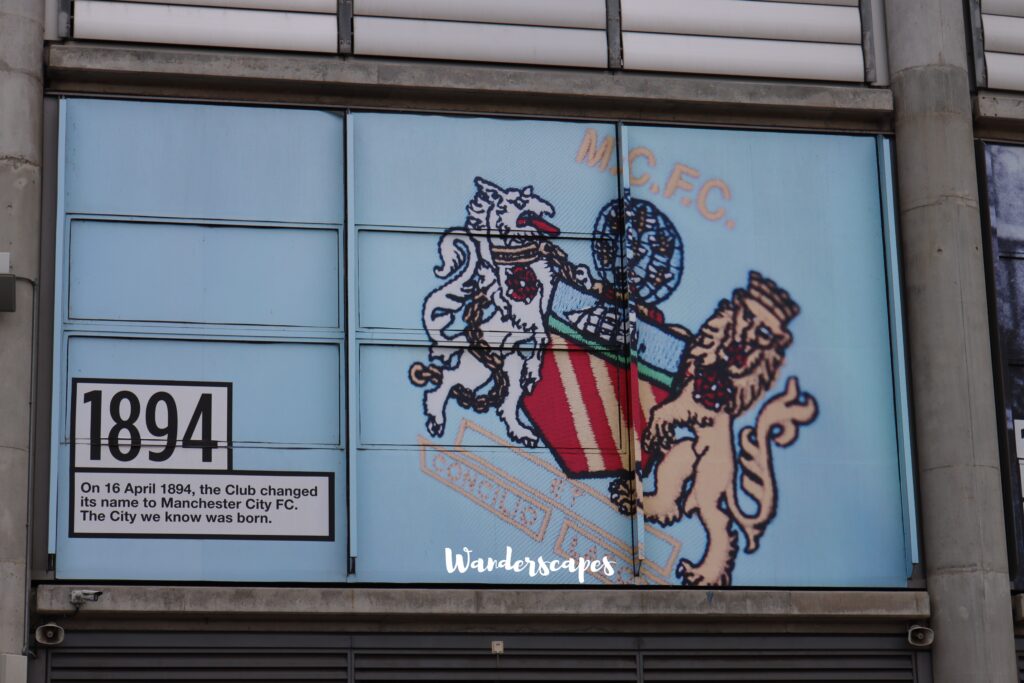
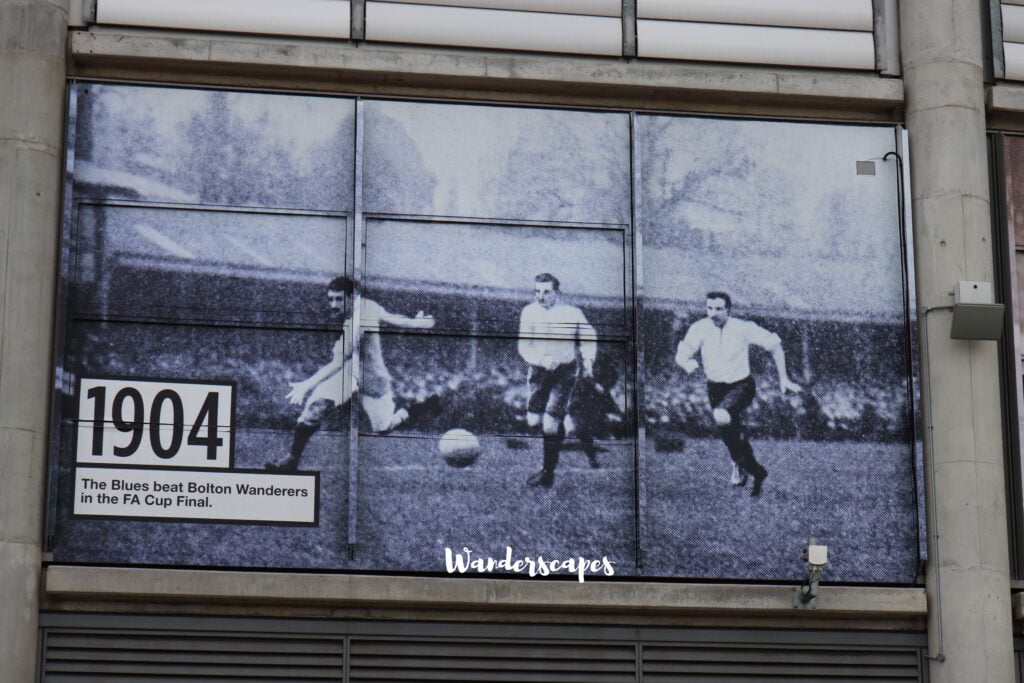
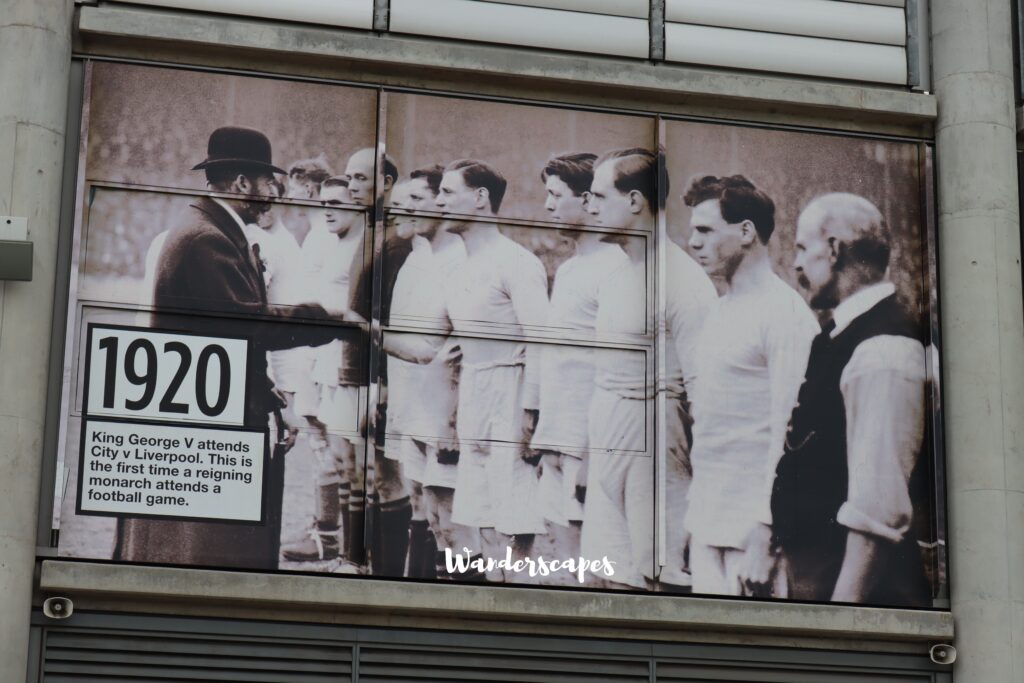
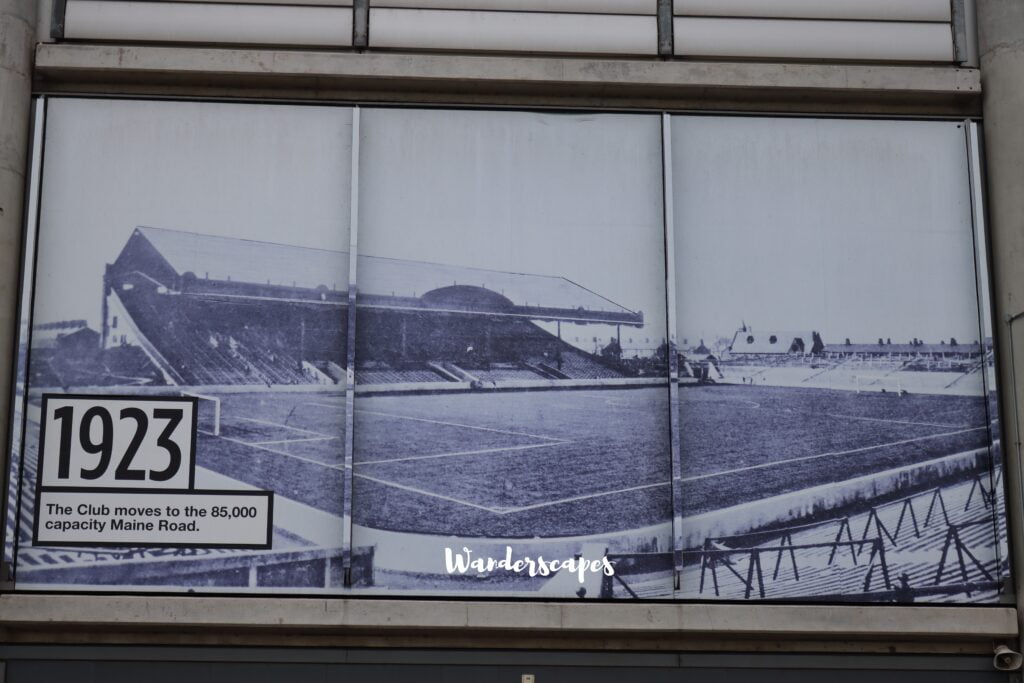
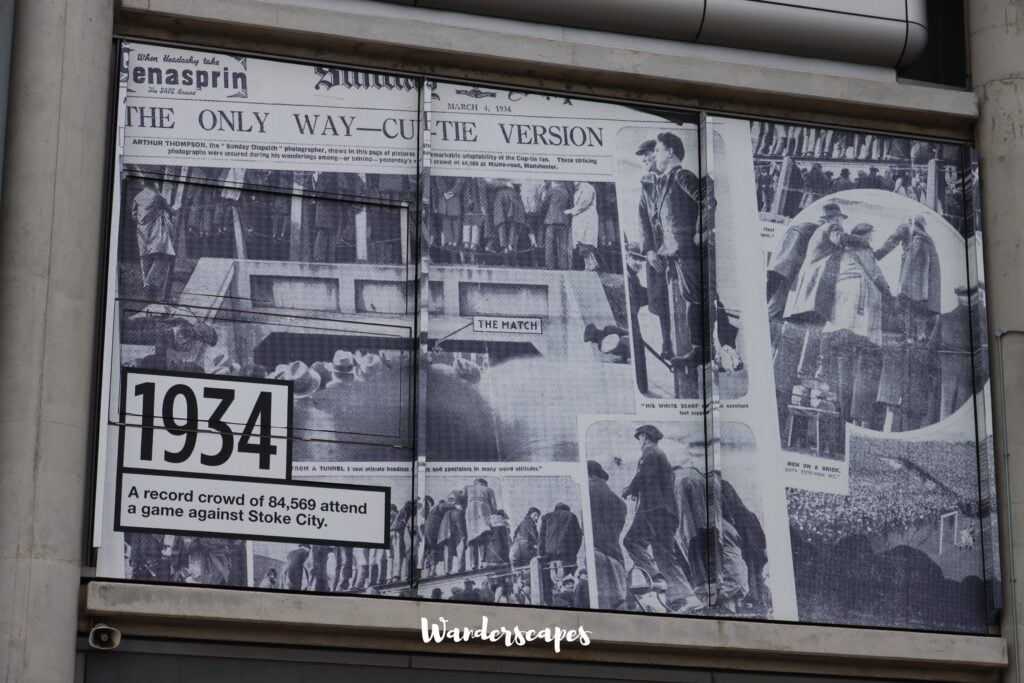
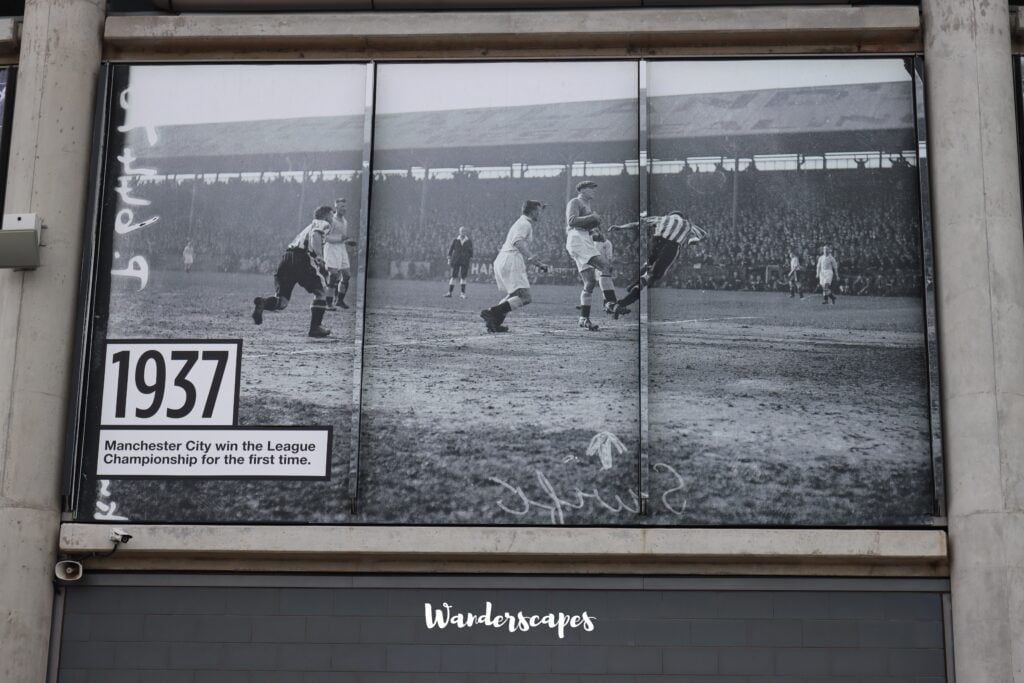
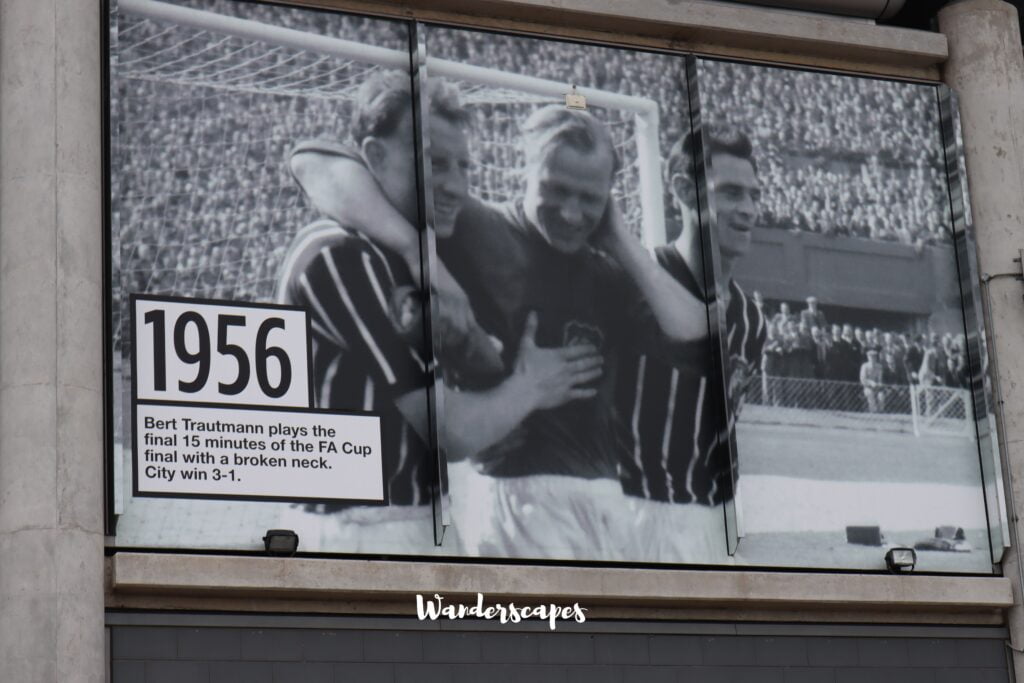
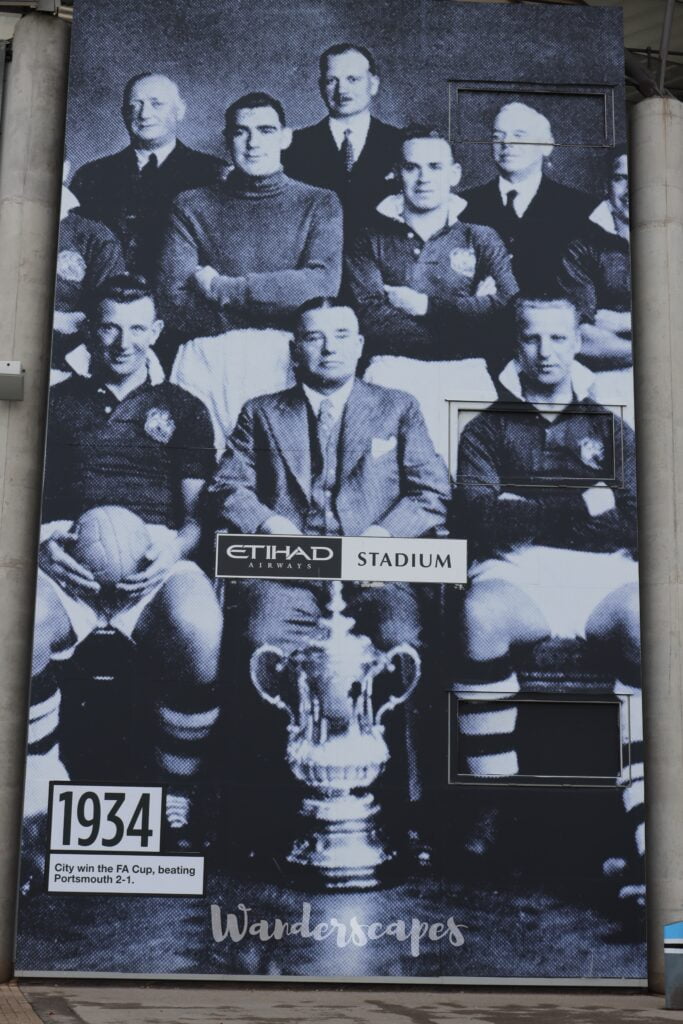
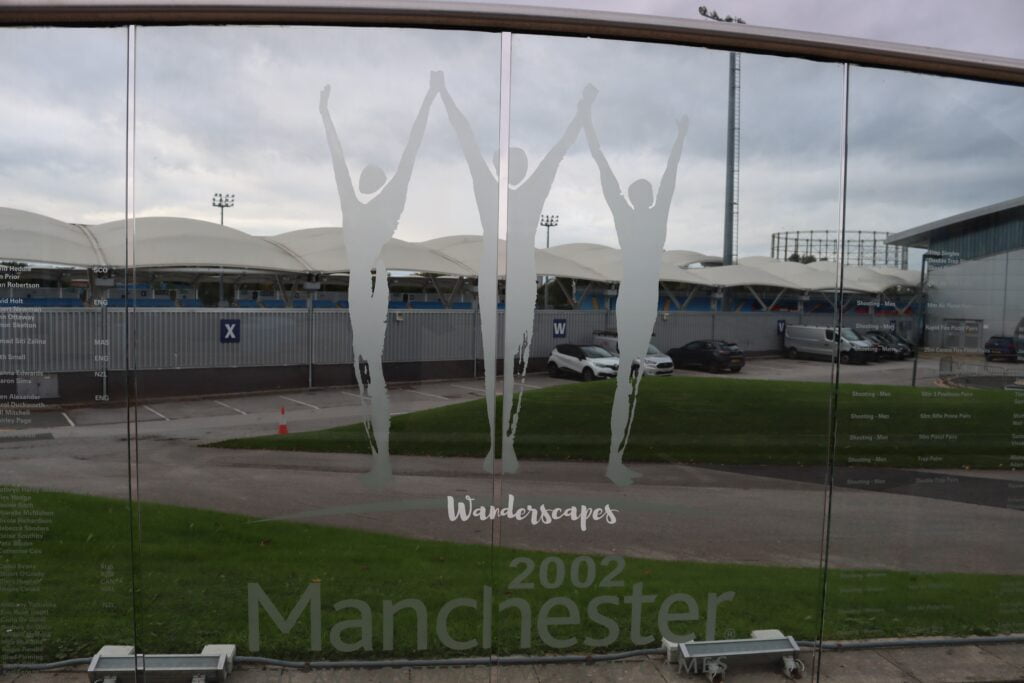
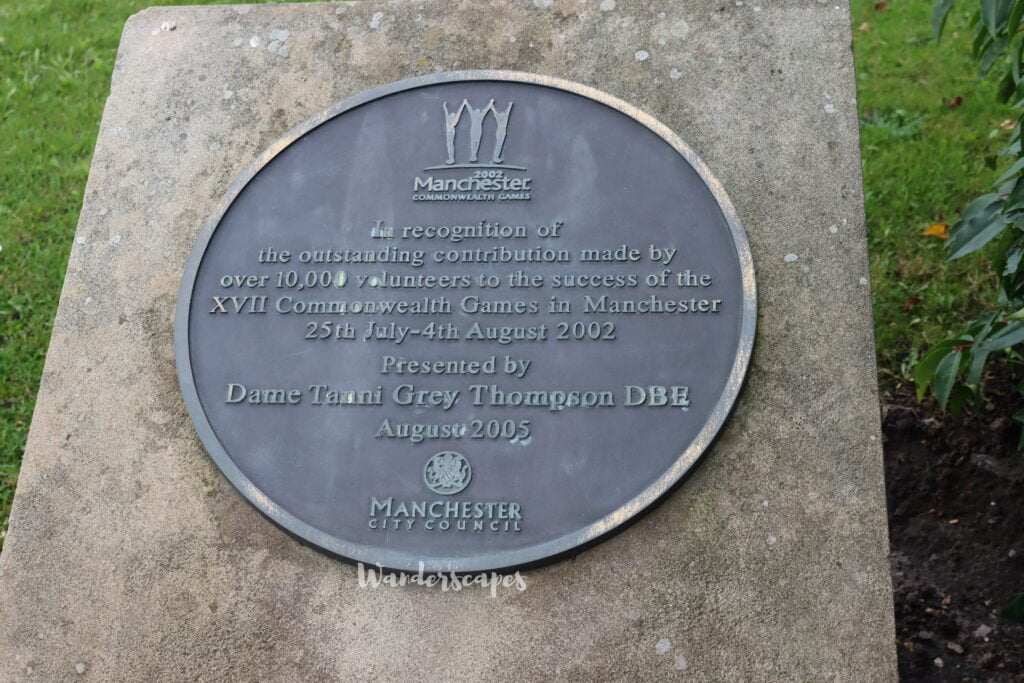
2 comments
Simply awesome! I never knew this much about the Stadium, thanks for this blog
Thanks a lot Pinki! Yes, it is amazing that we can find a lot of history and information even in and around a stadium. We love to explore and share such snippets with our readers. Happy to know that you enjoyed it. Stay tuned for more 🙂